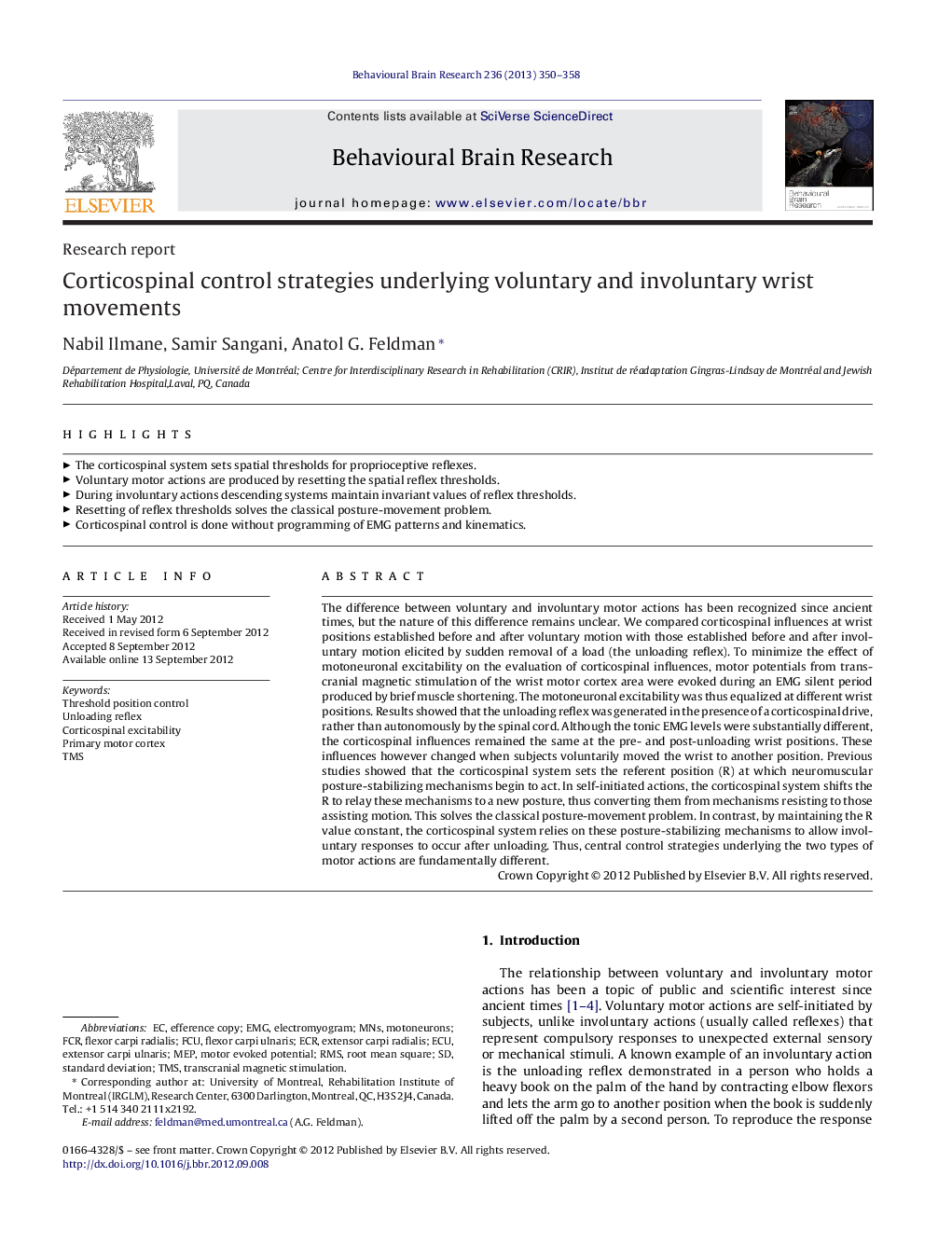| کد مقاله | کد نشریه | سال انتشار | مقاله انگلیسی | نسخه تمام متن |
|---|---|---|---|---|
| 6259519 | 1612996 | 2013 | 9 صفحه PDF | دانلود رایگان |
The difference between voluntary and involuntary motor actions has been recognized since ancient times, but the nature of this difference remains unclear. We compared corticospinal influences at wrist positions established before and after voluntary motion with those established before and after involuntary motion elicited by sudden removal of a load (the unloading reflex). To minimize the effect of motoneuronal excitability on the evaluation of corticospinal influences, motor potentials from transcranial magnetic stimulation of the wrist motor cortex area were evoked during an EMG silent period produced by brief muscle shortening. The motoneuronal excitability was thus equalized at different wrist positions. Results showed that the unloading reflex was generated in the presence of a corticospinal drive, rather than autonomously by the spinal cord. Although the tonic EMG levels were substantially different, the corticospinal influences remained the same at the pre- and post-unloading wrist positions. These influences however changed when subjects voluntarily moved the wrist to another position. Previous studies showed that the corticospinal system sets the referent position (R) at which neuromuscular posture-stabilizing mechanisms begin to act. In self-initiated actions, the corticospinal system shifts the R to relay these mechanisms to a new posture, thus converting them from mechanisms resisting to those assisting motion. This solves the classical posture-movement problem. In contrast, by maintaining the R value constant, the corticospinal system relies on these posture-stabilizing mechanisms to allow involuntary responses to occur after unloading. Thus, central control strategies underlying the two types of motor actions are fundamentally different.
⺠The corticospinal system sets spatial thresholds for proprioceptive reflexes. ⺠Voluntary motor actions are produced by resetting the spatial reflex thresholds. ⺠During involuntary actions descending systems maintain invariant values of reflex thresholds. ⺠Resetting of reflex thresholds solves the classical posture-movement problem. ⺠Corticospinal control is done without programming of EMG patterns and kinematics.
Journal: Behavioural Brain Research - Volume 236, 1 January 2013, Pages 350-358
